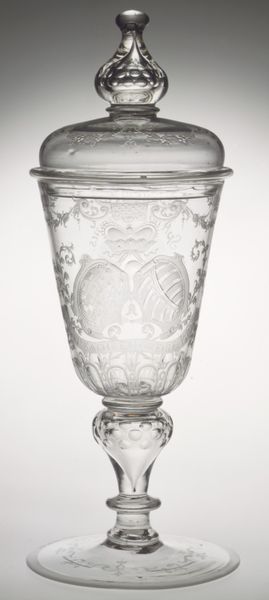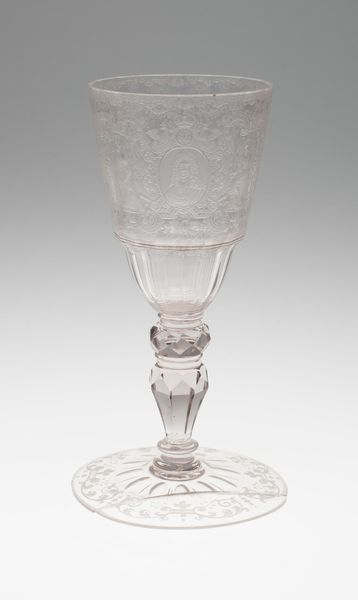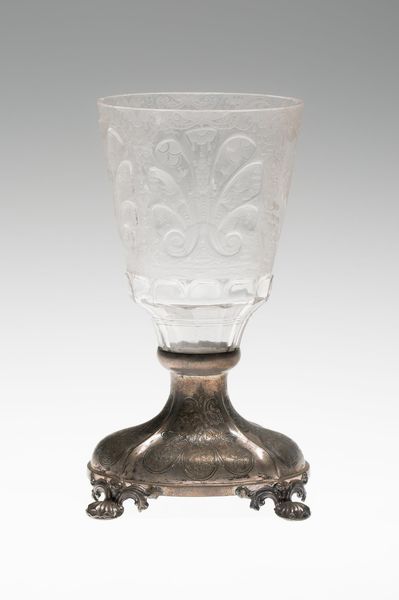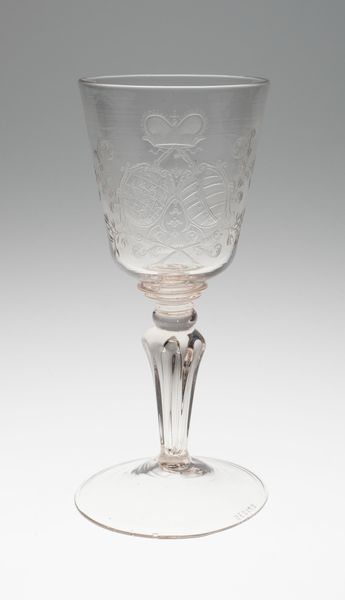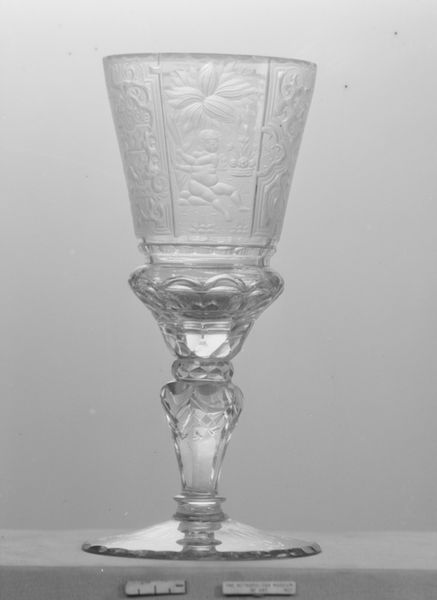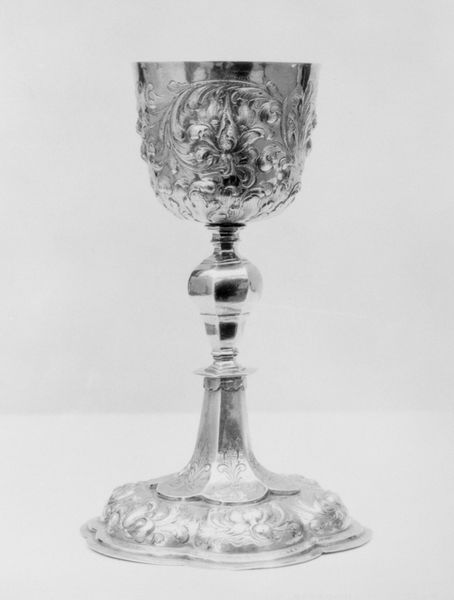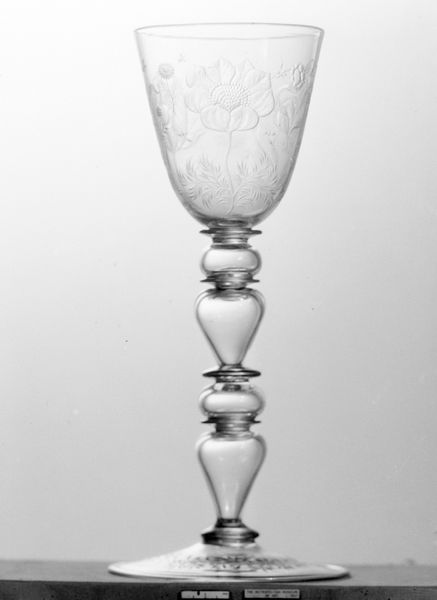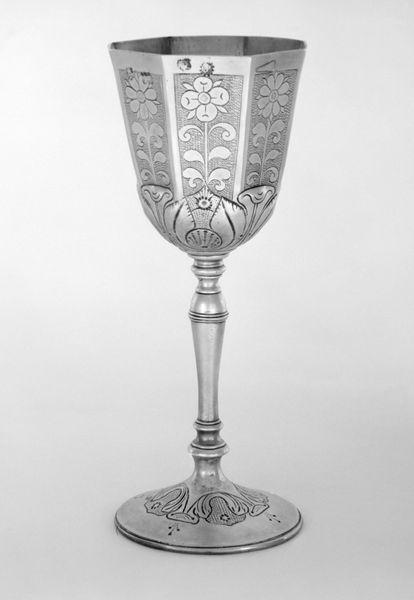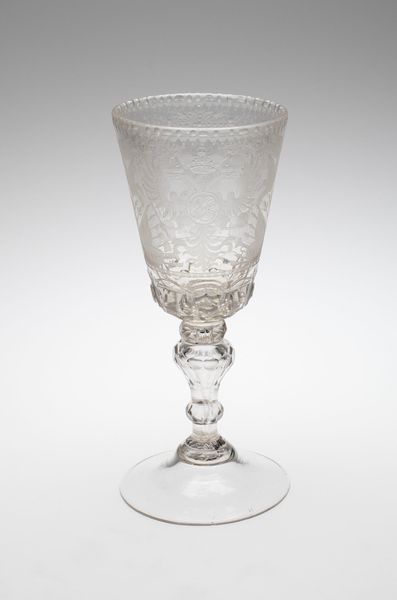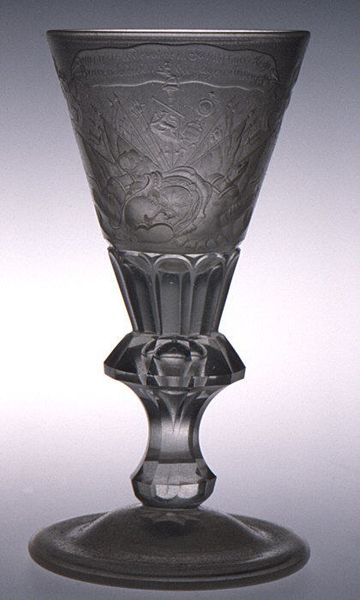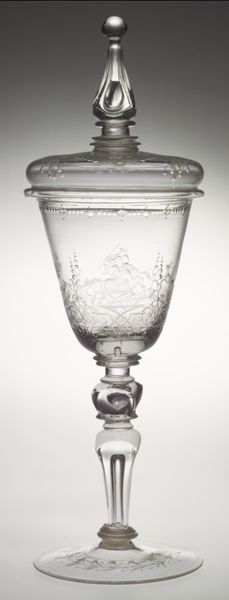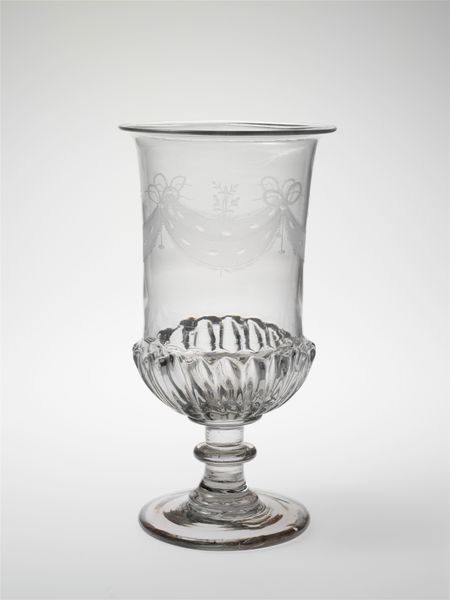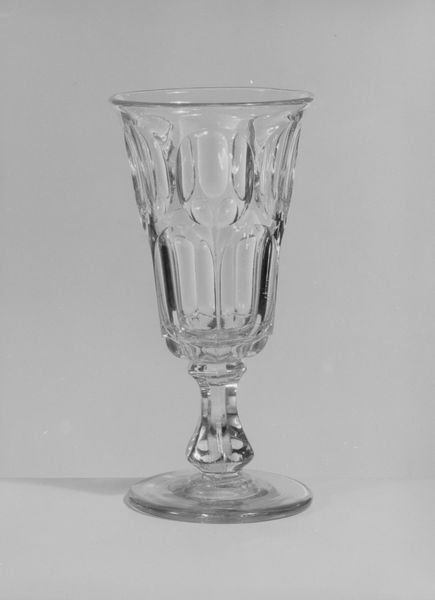
Allegory of love, hope and plenty 1745 - 1755
0:00
0:00
glass, sculpture
#
allegory
#
baroque
#
glass
#
sculpture
#
decorative-art
Dimensions: Overall (with cover): 12 3/8 × 3 5/8 in. (31.4 × 9.2 cm)
Copyright: Public Domain
Curator: Let's examine this ornate glass sculpture, "Allegory of love, hope and plenty" created between 1745 and 1755 by Johann Heinrich Balthasar Sang. What is your immediate impression of the work? Editor: Its pallid austerity chills me. Despite the supposed allegorical abundance, I sense only elite indulgence. Was this delicate objet d'art truly intended to represent "plenty," when many people at the time were starving? Curator: Interesting. I find it fascinating how Sang uses the glass medium itself. Its clarity and fragility communicate the delicate balance between these abstract concepts, love, hope, and plenty. Observe how the light refracts through the engraved patterns, creating an intricate dance of light and shadow. Editor: Shadow indeed. The elaborate ornamentation—that finial on top like a grotesque boil—feels utterly divorced from lived experience. Were there contemporary social structures in place that ensured this "allegory" was never truly realized for anyone but a select few? How was poverty, systemic violence, and colonial subjugation invisibilized within this decorative art? Curator: The Baroque style certainly favored ornamentation. Look at the etched circular motifs and the repetitive patterned designs, which give the object a unique rhythm and balance. Notice how Sang employs specific shapes and engraving techniques that were signatures of the era's glassworks? Editor: "Rhythm and balance?" In whose reality? It feels symptomatic of a society where aesthetics and artifice concealed the ruthless exploitation of labour and resources needed to even make such an object. Who was forced to mine and transport the raw materials used in this glass, what conditions were they subject to? These details must not remain invisible. Curator: I appreciate you placing this artwork within its societal frame. Examining only the structure, I see that Sang’s design and glassmaking expertise, reveal Baroque principles, in a useful example of material culture from the era. Editor: And situating those material origins alongside of the labor economy gives this lovely, useless object far more narrative richness, in a cautionary tale of social disparities then and now.
Comments
No comments
Be the first to comment and join the conversation on the ultimate creative platform.
